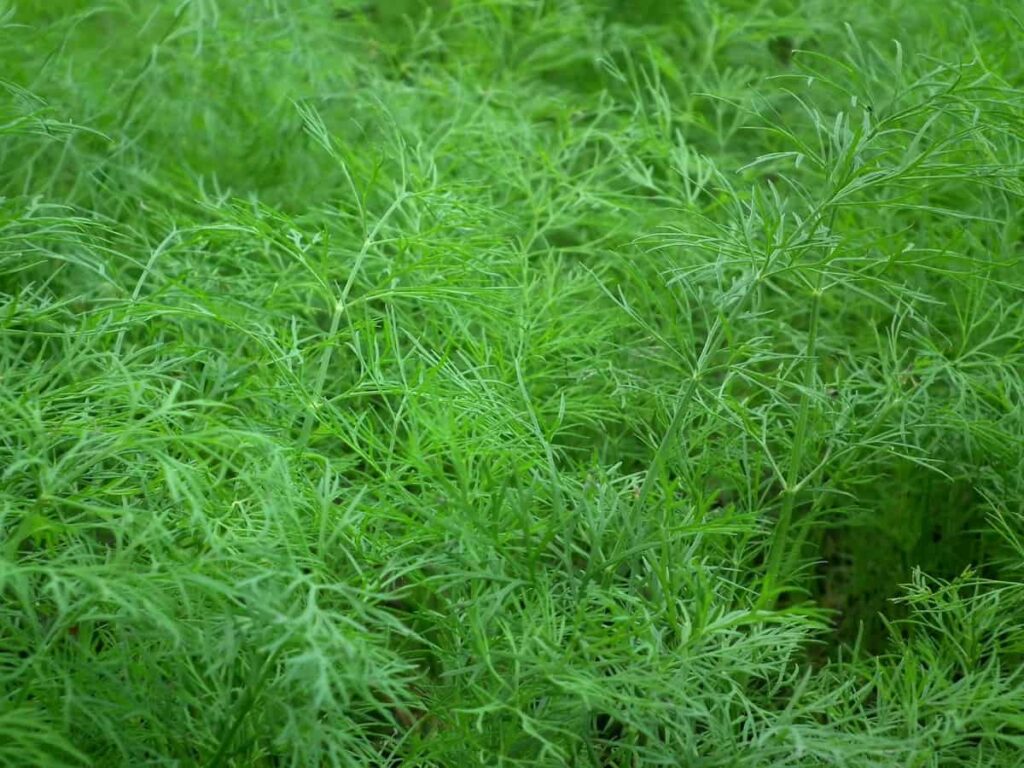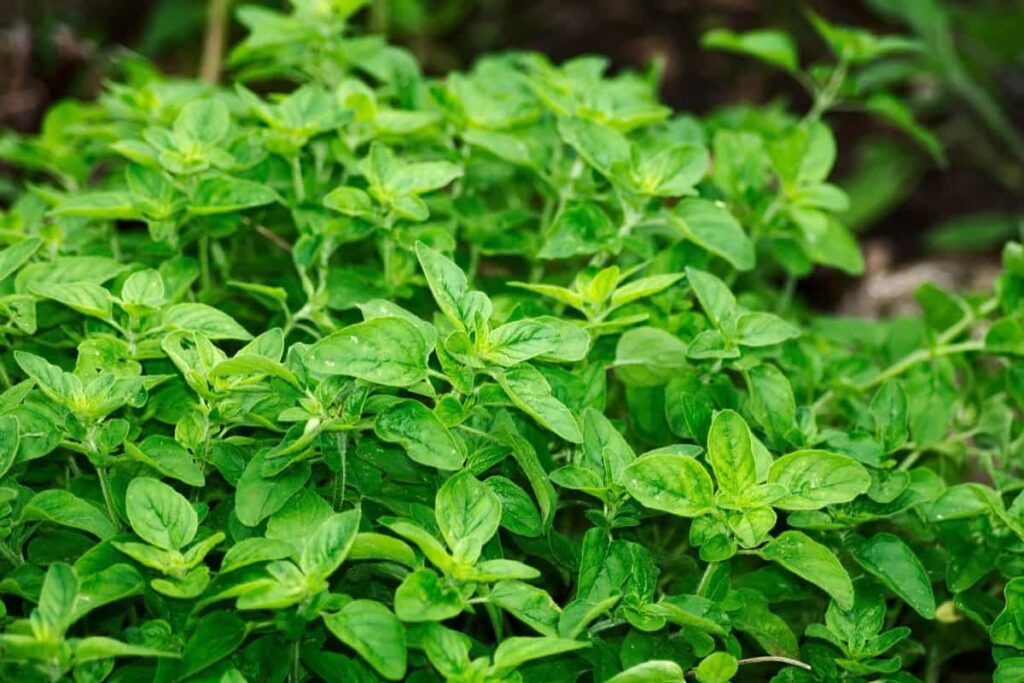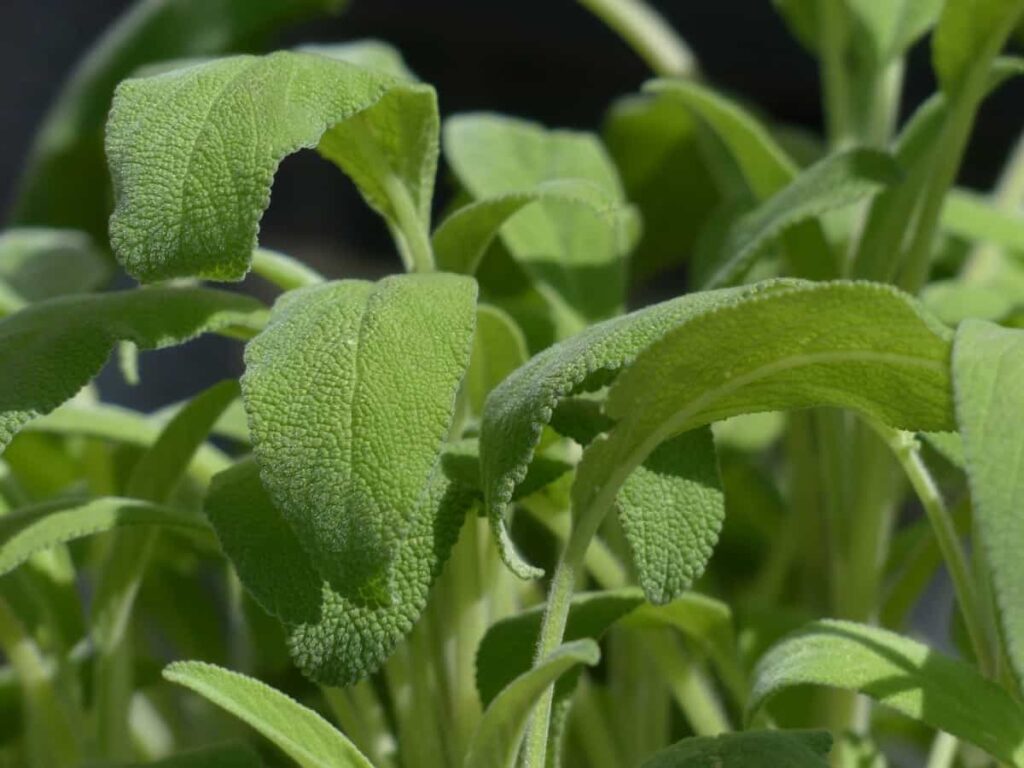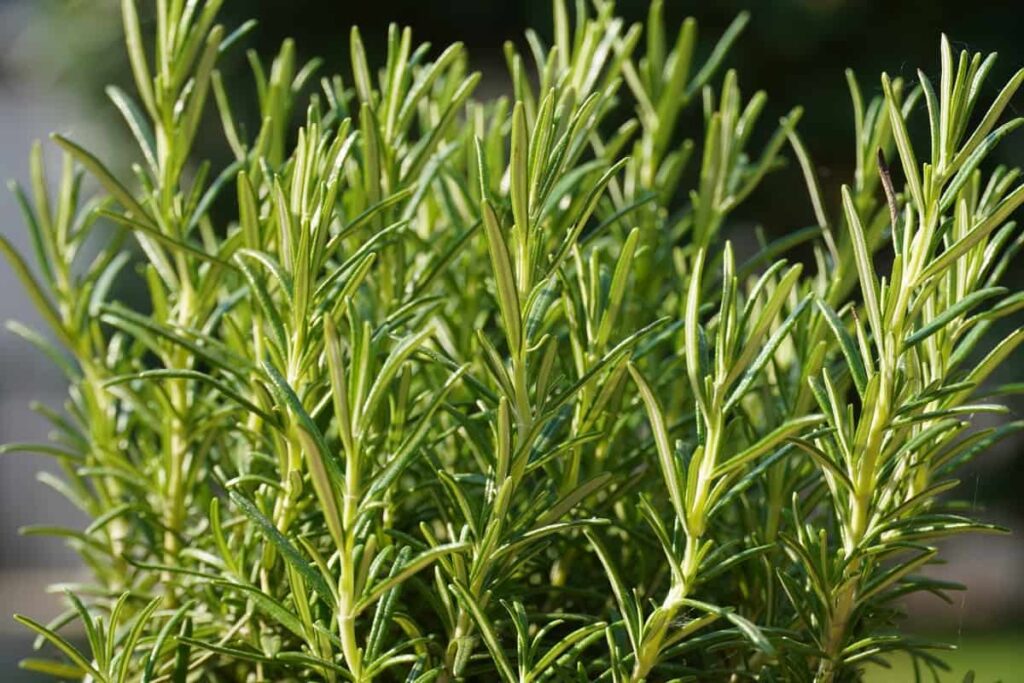Hello friends, Are you planning to grow herbs and looking for the correct information? Well, you have reached the right post. Herbs are one of the easiest and most rewarding plants to grow in your kitchen garden. Not only do they add flavor and nutrition to your meals, but they also have potent medicinal properties.

There are dozens of herbs you can grow in your kitchen garden, but we’ve compiled a list of our favorites. From classics like basil and mint to lesser-known gems like borage and tansy, there’s an herb for everyone on this list. So whether you’re a seasoned gardener or a beginner, read on for our top 17 herbs to grow in your kitchen garden.
Top 17 Herbs to grow in your kitchen garden
Chives
Chives are one of the most popular herbs to grow in the kitchen garden. They have a mild onion flavor and can be used in many recipes. Chives are easy to grow and can be grown in both sun and shade. They are also drought-tolerant and will do well in dry conditions.
Cilantro
Cilantro is an herb that is often used in Mexican and Asian cuisine. It has a strong, pungent flavor that some people find unpleasant. When growing cilantro, it is essential to keep it well-watered, as the plant does not tolerate drought well. Cilantro can be grown from seed or transplanted from another pot. If you are growing cilantro from seed, start the seeds indoors about six weeks before the last frost date. Cilantro will bolt (flower and produce seed) if the weather gets too hot, so it is best to plant it in the spring or fall.
Dill
Dill is an annual herb in the celery family and native to the Mediterranean region and Southern Russia. Dill grows about 2-3 feet tall and has blue-green, finely divided leaves. The flowers are yellow and appear in the umbels. Dill is a cool-season herb and can be direct seeded or started indoors. When growing dill, it is best to sow the seeds directly in the garden as they do not transplant well. Dill prefers full sun but will tolerate some light shade. Choose well-drained soil which is rich in organic matter.
In case you missed it: How to Propagate Prickly Pear Cactus from Cuttings, and Seeds: Planting, Growing Indoors, Outdoors, and Care

To encourage bushier growth, pinch back the tips of the plants when they are about 6 inches tall. Dill does not require a lot of fertilizer but benefits from a quarterly application of compost or manure tea. Dill herb can be harvested as soon as the plants have reached 6 inches tall. Cut the stems just above a leaf node using sharp scissors or pruning shears. You can also harvest dill by digging up the entire plant and replanting it in another location. If you want to dry dill, cut the stems just before the flowers open and hang them upside down in a dark, dry place.
Fennel
Fennel is a herbaceous perennial plant in the family of Apiaceae and native to the Mediterranean region, and has become popular in many other locations in the world. The bulb, leaves, and seeds of fennel are all edible. The bulb looks like an onion, and the leaves resemble the Dill plant. Fennel has a sweet anise-like flavor. The fennel plant grows to a height of 2 to 4 feet. The leaves are finely divided and feathery, with a fresh green color.
The flowers are small and yellow, with five petals. The fruit is a dry seed capsule and contains several small brown seeds. Fennel is easy to grow in most soils and prefers full sun or partial shade. It is drought-tolerant and can be grown in containers. Fennel can be propagated by seed or division of the root ball in spring or autumn.
To harvest fennel, cut the stalks just above the ground when the plant is 6–8 inches tall. To harvest the bulbs, wait until they are about 1 inch in diameter. To harvest the seeds, you must let the flower heads to dry on the plant itself and then shake them into a paper bag or any other cover.
Lavender
Lavender is an herb that has a long history of use in cooking and medicine. The flowers and leaves of the plant are used to make various products, including essential oils, soaps, and cosmetics. Lavender is a hardy plant that can be grown in most climates. It prefers full sun and well-drained soil. Lavender is drought-tolerant and does not need much fertilizer. To harvest lavender, cut the stems when the flowers are in full bloom.
Hang the stems upside down in a cool, dark place to dry. Once the lavender is dry, you can remove the flowers and leaves from the stems. Store dried lavender in an airtight container out of direct sunlight. Lavender can be used in many different ways. The flowers can be added to salads or used as a garnish for other dishes. Lavender oil can be used to make perfumes or potpourris. Dried lavender can be added to sachets or pillows for a relaxing scent.
Marjoram
If you love the taste of oregano, you’ll definitely want to try marjoram. This herb is closely related to oregano but has a slightly sweeter flavor. Marjoram is often used in Mediterranean cooking and pairs well with chicken, fish, and veggies.
To grow marjoram, start with a young plant from your local nursery or garden center. Marjoram can be grown in pots or on the ground as long as it gets plenty of sun. It is better to keep the soil moist but not waterlogged and fertilize every few weeks during the growing season. Pinch off the buds to keep the leaves coming when the plant starts to flower. You can harvest marjoram anytime during the growing season – just snip off a few sprigs as needed.
Oregano
Oregano is a kitchen staple herb easy to grow indoors or out. This flavorful herb can be used in various dishes, from pizza and pasta to chicken and fish. Oregano is a perennial herb, which means it will come back year after year with minimal care. When growing oregano, plant it in well-drained soil and give it plenty of sunlight. If you live in a hot climate, consider planting oregano in a pot so you can bring it inside during the hottest months.
In case you missed it: Mexico Vegetable Planting Calendar: Month-wise Chart, Schedule Guide

Mint
If you plan add a little flavor to your cooking, mint is a great herb to grow in your kitchen garden. Mint is a versatile herb used in sweet or savory dishes. You can add mint to your favorite recipes or use it to make new ones. Mint is relatively easy to grow and doesn’t require much care. It’s an excellent plant for beginning gardeners. Mint prefers moist, well-drained soil and full sun to partial shade.
When growing mint, give it plenty of room to spread. This herb can quickly take over your garden if left unchecked. Mint is ready to harvest when the leaves are 6 to 8 inches long. Cut the stems just above the leaves with sharp scissors or pruning shears. You can dry or freeze mint leaves for later use. So what are you waiting for? Get growing!
Parsley
Parsley is a popular herb that is used in a variety of dishes. It has a mild, slightly sweet flavor and is often used as a garnish. Parsley herb is a good source of vitamins A and C and contains iron. When growing parsley, it is best to start with seedlings or transplants. The plant does not tolerate frost well, so it is best to wait until frost has passed before planting.
Parsley prefers full sun but will also do well in partial shade. The soil should be loose and well-drained. Parsley can be harvested when the leaves are 6-8 inches long. To dry parsley, tie the stems and hang them upside down in a cool, dark place.
Sage
Herbs are a staple in many kitchens, and sage is no exception. This herb has a long history of use in cooking and medicine. Sage is a versatile herb that can be used in many different dishes. It has a strong flavor that goes well with meats and vegetables. Sage can also be used to make tea.
In case you missed it: Garden Planting at Home for Beginners: A Growing Guide for Flowers, Fruits, Herbs, and Vegetables

Sage is easy to grow in your kitchen garden. It prefers full sun and well-drained soil. Sage is drought-tolerant and does not need much water. Once the sage is established, it can be challenging to get rid of. Sage will spread quickly if left unchecked. You can control the spread of sage by regularly trimming it back.
Thyme
Thyme is a perennial herb that grows in sunny, well-drained areas. It has small, delicate leaves and a strong, pungent flavor. Thyme is used in many cuisines worldwide and is a versatile ingredient in cooked and raw dishes. When growing thyme, choosing a location that gets plenty of sunlight and has good drainage is essential. Thyme prefers sandy or gravelly soil and does not like to be waterlogged.
To ensure good drainage, consider raised beds or planting thyme on a slope. Thyme herb can be started from seed, but it’s easier to propagate from cuttings or division. When starting from seed, sow the seeds indoors 6 to 8 weeks before the last frost date. Keep the soil moist but not wet and transplant the seedlings outdoors after the last frost. If you’re propagating from cuttings, take 4 to 6-inch cuttings from new growth in spring or early summer.
Root the cuttings in the sand, perlite, or vermiculite and keep them moist until they develop roots (usually 2 to 4 weeks). Once rooted, transplant the cuttings into individual pots or the garden bed. The division is another easy way to propagate thyme. Dig up an existing plant in early spring and divide it into 2-3 sections with a sharp knife or spade. Replant each section in a different location and water
Arugula
Arugula is a nutrient-rich, leafy green often used in salads or as a garnish. This flavorful herb is easy to grow and can be harvested within weeks of planting. Arugula prefers cool weather and can tolerate some frost, making it a good choice for spring or fall plantings. The delicate leaves of arugula will become bitter if the plant is allowed to bolt (flower), so it’s best to harvest regularly.
Rosemary
Rosemary is a fragrant, evergreen herb that is popular in many cuisines around the world. Rosemary has a strong, pungent flavor that goes well with lamb, chicken, and fish. It is also used to flavor soups, stews, and sauces. Rosemary can be grown in pots or on the ground. It prefers full sun and well-drained soil. Water regularly, but do not over-water. Rosemary can be propagated from cuttings or seedlings.
In case you missed it: Growing Calla Lily in Your Garden: A Guide to Propagation, Planting, and Care

Harvest rosemary by cutting off the stems just above where they branch off. You can use fresh rosemary immediately or store it in the fridge for up to a week. To dry rosemary, choose a cool and dry place and hang them upside down until the stems are dried. Now time to strip the leaves from stems and store them in an airtight container or bag.
Borage
Borage is an annual herb in the family of Boraginaceae and native to the Mediterranean region and has naturalized many other locales. It grows to a height of 60 to 100 cm (24 to 39 in) and produces small, blue flowers. The leaves are edible and have a cucumber-like flavor. Borage is grown commercially for culinary and medicinal use. The plant is used as a source of oil, salad herb, or in drinks such as borage tea.
It is also used in traditional medicine for various purposes, including treating anxiety and depression. The plant grows best in full sun and well-drained soil. It can be propagated by seed or cuttings and does not require much care once established. Borage will self-seed readily, so deadheading is recommended to prevent it from becoming invasive.
Basil
If you’re looking to add some flavor to your cooking, there’s no better way to grow your herbs. Basil is an excellent option for those who want to start a kitchen garden. Not only does it have a delicious taste, but it’s also easy to grow. Below are some tips for growing basil:
- Start with a soil mix that is high in organic matter.
- Water regularly, especially during dry periods.
- Fertilize every few weeks with a water-soluble fertilizer.
- Place plants in an area that receives at least 6 to 8 hours of sunlight daily.
- Harvest leaves when they are young and tender.
In case you missed it: How to Grow Columbine Flowers: A Guide to Propagation, Planting, and Care

Chervil
Chervil herb is a delicate herb with a mild anise flavor. It is often used to garnish soups and salads or as a component of fine herbs. Chervil is easy to grow in both indoor and outdoor gardens. When growing chervil indoors, provide plenty of sunlight and regularly water the plants.
Chicory
Chicory is a perennial herb in the daisy family native to Europe and North Africa. The plant has a long, tapering root that is white or light brown on the outside and deep blue on the inside. The leaves are blue-green, and the flowers are white or pale blue. Chicory is grown for its roots, which are roasted and ground to make a coffee substitute, and for its leaves, which are used as a salad green.
Chicory is a hardy plant that can be grown in any soil. It prefers full sunlight, but you can also grow in partial shade. Chicory can be started from seed or transplanted from division or cuttings. To grow chicory from seed, sow the seeds in late summer or early fall in well-drained soil. Thin the plants to 12 inches apart when they are 4 inches tall. To transplant chicory, start with divisions of an established plant in spring or fall.
Plant the divisions 12 inches apart in well-drained soil. To grow chicory from cuttings, take 4-inch stem cuttings from an established plant in spring or summer and root them in moist sand or vermiculite. Plant the rooted cuttings 12 inches apart in well-drained soil. Chicory is not susceptible to many pests or diseases but can be affected by aphids, slugs, and snails.
Conclusion
Growing herbs in your kitchen garden are fun and healthy. What are you waiting for? Let us start herbs right away. Happy gardening.
- Management Pests and Diseases in Your Cotton Field
- Sheep Farming Business Plan for Beginners
- Aquaponic Farming at Home: A Step-By-Step Guide
- Profitable Village Farming Business Ideas in 2024
- High-Yield Aquaculture: Fast-Growing Fish for Farming
- Effective Fish Pond Construction Techniques for Beginners
- Irrigation and Water Management in Pineapple Farming
- Blossom to Harvest: Mastering Flowering and Pollination in Papaya Farming
- Pig Fattening Essentials: From Selection to Sale for Beginners
- Raising Wagyu Cattle: A Complete Guide for Premium Beef Production
- Soil Types and Their Water Holding Capacity
- Optimizing Irrigation Schedules for Coconut Groves for Enhanced Yield
- Espresso Your Garden: Coffee Grounds for Healthier Acid-Loving Plants
- The Best Soil Mix for Snake Plants: How to Mix Your Own Snake Plant Soil
- Green Thumb Success: Expert Tips for Cultivating Greenhouse Beans All Year Round
- Bloom All Year Round: The Ultimate Guide to Indoor Hyacinth Care
- Eco-Friendly Gardening: How to Make Liquid Fertilizer from Kitchen Waste
- Ultimate Guide to Grow Anise in Pots: Explore Seed Propagation to Harvesting
- Guide to Raising Chester White Pigs: Discover Breed Facts to Growth Management
- Mastering the Elegance: The Ultimate Guide to Weeping Cherry Tree Care, Planting, and Maintenance
- Ultimate Guide to Planting Garlic in Grow Bags: Growing Strategies for Beginners
- How to Fix Spider Plant Leaf-Related Problems: Natural and Organic Remedies
- 10 Reasons Why Your Tulsi Plant is Shedding Leaves: Home Remedies and Solutions
- Optimizing Growth and Yield: The Advantages of Palm Bunch Ash Fertilizer
- Utilizing Neem Oil Extract as a Natural Pesticide for Hydrangea
- From Soil to Harvest: Various Ways in Which Farmers Can Use AI Tools
- Steps to Encourage and Induce Citrus Flowers: A Comprehensive Guide
- How to Fix Snake Plant Leaf-Related Issues: Natural and Organic Remedies
- Transform Your Garden into a Fragrant Oasis with Raat Ki Rani (Night Blooming Jasmine)
- Discover the Ideal Chicken Breeds for Philippine Farms
- How to Create a Poultry Egg Farm Business Plan for Profits
- Grow Lemon Cucumbers Like a Pro: Insider Techniques for Bountiful Yields
- Ultimate Guide to Caring for Your Pink Princess Philodendron: Tips for Thriving Variegation
- Areca Nut Profit Per Acre: Calculating Yield and Cost of Cultivation
- How Kaveri Chicken is Becoming a More Profitable Breed in Indian Backyards
- Transform Your Barn: 9 Steps to Convert a Horse Stall into a Chicken Coop
